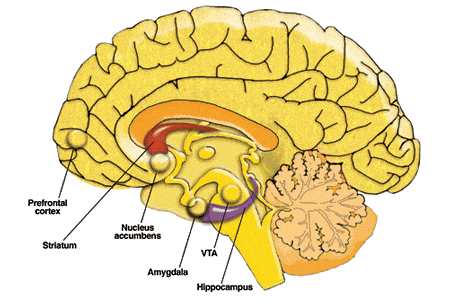
Neuroscience of Psychotherapy

Therapy has long been described as the “talking cure.” In the first layer, therapy involves experiencing our feelings, labeling them in real time, and articulating them out loud. In the second layer, we interpret and make connections–past and present. The third layer involves our integrating our emotional sense into our current identity–this helps us transform our future Reality.
But exactly how and why does this help? A recent UCLA neuro-imaging study using functional MRI’s, reported in Psychological Science, helps us uncover the physiological underpinning of and efficacy of the therapeutic process.
Putting feelings into words, e.g. talking out loud, writing about them, etc. activates the right ventrolateral prefrontal cortex, located behind the forehead and eyes, is associated with thinking in words about emotional experience. In turn, this slows activity in the amygdala (alarm center where ‘negative’ feelings arise). Just as we hit the brakes to slow down our driving speed, labeling our feelings is akin to hitting the brakes on the intensity of our emotional response. For example, when we identify our state as ‘sad’ or ‘angry,’ our brain response is different: it’s more modulated. If we feel sad or angry, and do not observe or identify it as such, we’re likely to feel helpless in the swirl of such powerful emotion. This has startlingly useful implications for mindfulness practice–observing the present moment without judging: this amps up our prefrontal cortex and turns down amygdala activity. With this, we’re able to regulate and soothe our emotional reactivity, enjoy more equilibrium, and promote a greater sense of well-being.

PET scans show that for many people, psychotherapy induces brain changes similar to medication. For example, interventions such as evoking memories and empathizing, verbal/nonverbal communication, confronting and interpreting, generating insight, self-soothing and regulating emotion, reducing anguish . . . through neuro-plasticity, the circuitry of feelings, thinking, and behavior is transformed. This is a natural extension of our brain changing from moment to moment. In response to experiences throughout our lives, our brain changes continuously, forming dendritic spines and encoding verbal/nonverbal memories. Psychotherapy uses our innate brain plasticity to help us change and heal.
